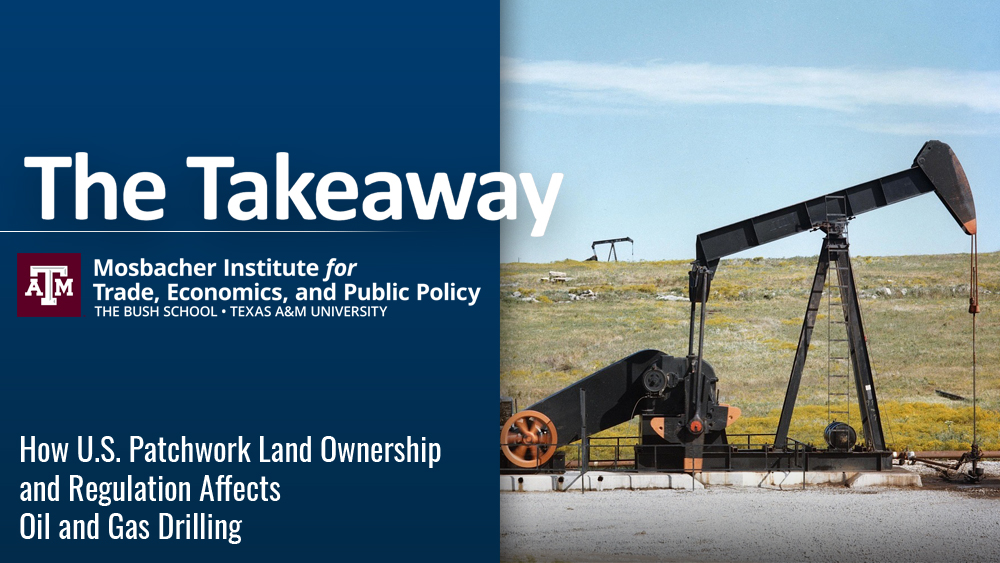
An unusual natural experiment in Wyoming shows how regulations on state-owned land affect the likelihood of drilling on nearby federal-owned land.
Evaluating the effects of federal versus state and private policies is challenging because the land that remains in federal ownership tends to be more remote, rugged, and arid—making drilling more costly. In Wyoming, however, the Land Ordinance of 1785 mandated that certain regularly spaced plots of land be transferred to state ownership upon statehood. The transfers resulted in a regular pattern of side-by-side state-owned and federal-owned land that persists today and provided the setting for a natural experiment that helps to understand the effects of land regulations.
In “How U.S. Patchwork Land Ownership and Regulation Affects Oil and Gas Drilling,” Eric Lewis, an Assistant Professor at the Bush School of Government and Public Service and a Mosbacher Research Fellow, describes his work examining Wyoming drilling data. Lewis finds that land ownership has a significant effect on drilling patterns. In particular, the drilling patterns show that state land seems to be preferred for drilling. His findings suggest that regulations that make drilling cheaper on state land also result in reduced drilling on nearby federal land. He also finds that federal land that is furthest from state land has the highest probability of drilling of all federal land.
The Takeaway is a publication of the Mosbacher Institute for Trade, Economics, and Public Policy at the Bush School of Government & Public Service at Texas A&M University.

